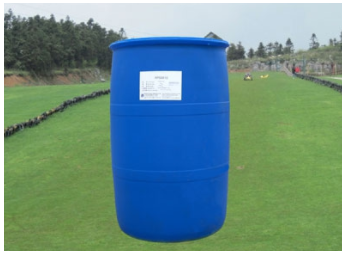Fluorine surfactant refers to the surfactant whose hydrogen on the hydrophobic group of hydrocarbon chain is completely replaced by fluorine atom. It is often used as emulsification, dispersion, defoaming, penetration, antistatic, acid and alkali resistance and lubricant. According to the structure of hydrophilic groups, fluorine surfactants can also be divided into cationic, anionic, amphoteric and non-ionic surfactants. Because the structure of its hydrophilic group is the same as that of hydrocarbon surfactant, the characteristics of fluorine surfactant are determined by carbon fluorine chain.

Alkyl glycoside
Fluorocarbon chain has the following characteristics: ① due to its large bond energy, it has good thermal stability, reagent resistance and low toxicity; ② Due to the small intermolecular force, it is hydrophobic and oil repellent, with small friction coefficient and no adhesion; ③ Low refractive index; ④ High insulation.
Fluorine surfactant shows the following characteristics: ① it can reduce the surface tension of water and other liquids and improve the wettability and permeability; ② It still showed high surface activity at low concentration; ③ It has good heat resistance and reagent resistance; ④ It also has surface activity in organic solvents.
Surfactants have three basic properties: interfacial adsorption, directional arrangement and micelle formation, and can produce five physical effects.
(1) Wetting and penetration
When it is necessary to improve the ability of aqueous solution to wet and penetrate a solid, a small amount of surfactant can be added to the aqueous solution to accelerate the wetting of the solid.
(2) Emulsification and diffusion
The phenomenon of making non water soluble substances in uniform emulsification or dispersion in water is called emulsification or diffusion. In the process of emulsification, one end of the hydrophobic group of emulsifier (surfactant) molecule is dissolved into the water-insoluble liquid phase, and the other end of the hydrophilic group is dissolved into the water phase. The emulsifier molecules are adsorbed on the phase interface between the water-insoluble material and water, and are arranged into a molecular layer in a directional manner, so as to reduce the interfacial tension of the two-phase interface and emulsify it. In the diffusion process, one end of the hydrophilic group of the diffusing agent (surfactant) molecule extends into the water, one end of the hydrophobic group is adsorbed on the surface of the solid particle, and a hydrophilic adsorption layer is formed on the solid surface layer.
(3) Solubilization
When the surfactant in the solution reaches the concentration of forming micelles, the micelles can absorb and aggregate the water-insoluble liquid and solid particles at the hydrophobic base end, so as to increase the solubility of slightly soluble or insoluble substances.
(4) Foaming and defoaming
The bubble structure surrounded by liquid film is formed between the gas-liquid interface, which reduces the surface tension between the interfaces.
(5) Washing action
Surfactants reduce the surface tension between the interfaces and produce a variety of functions such as wetting, emulsification, diffusion and anti adhesion, which leads to the washing effect.